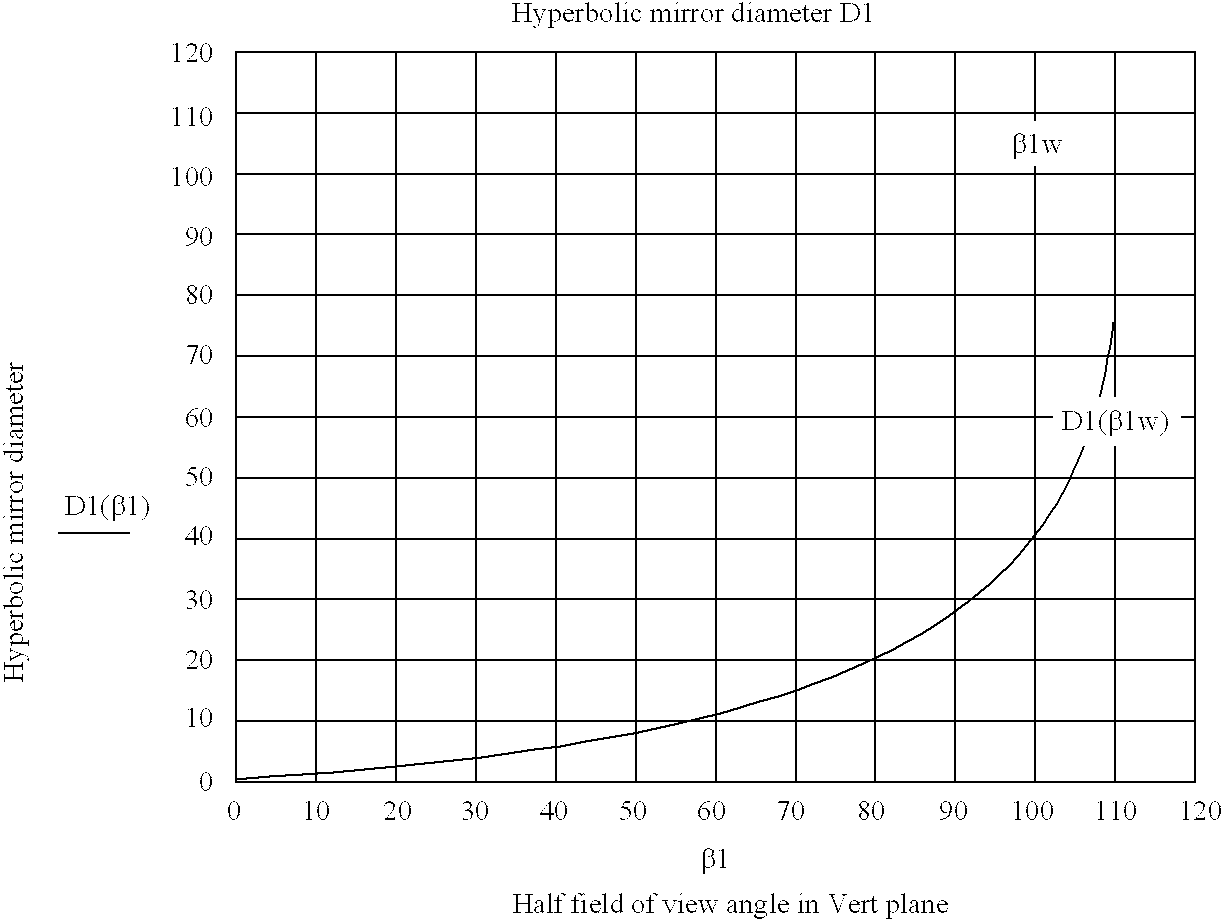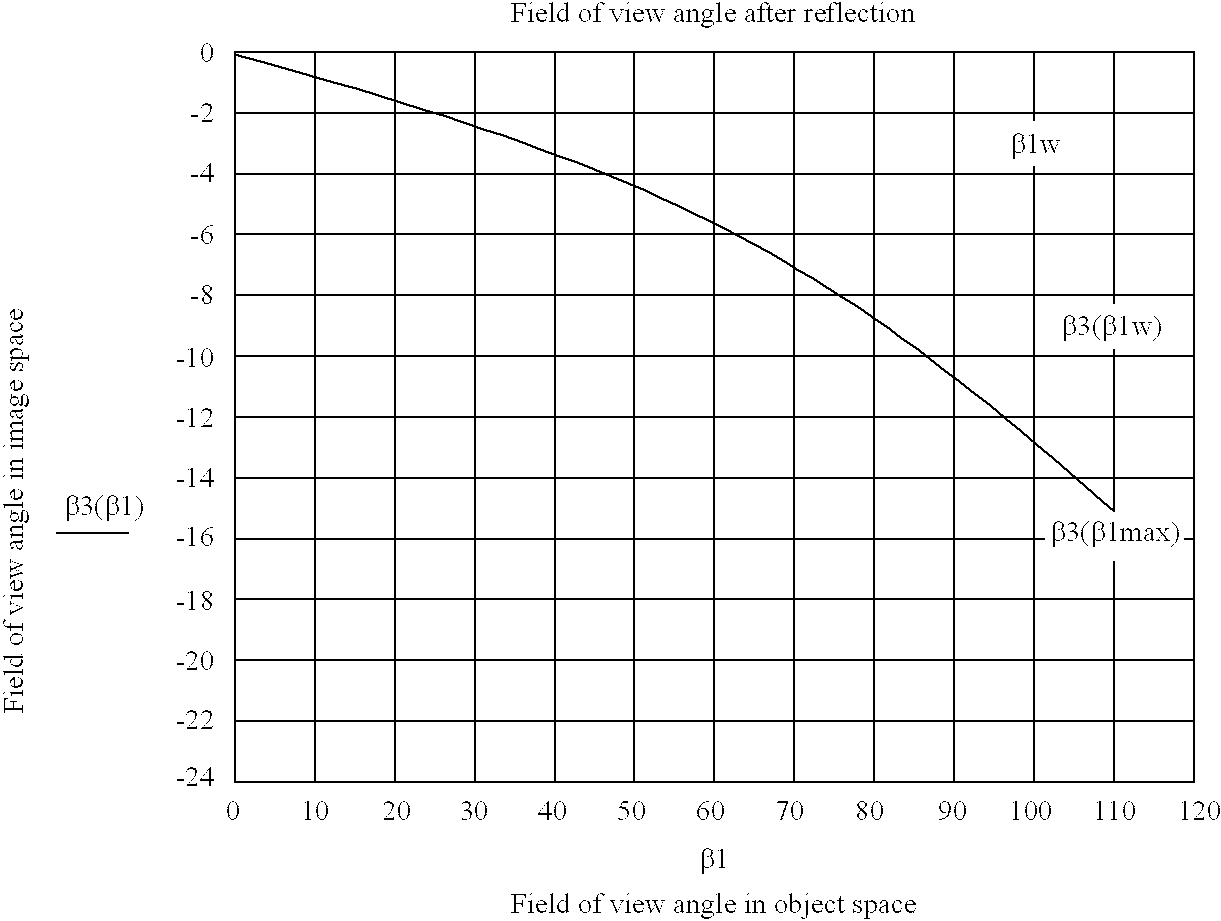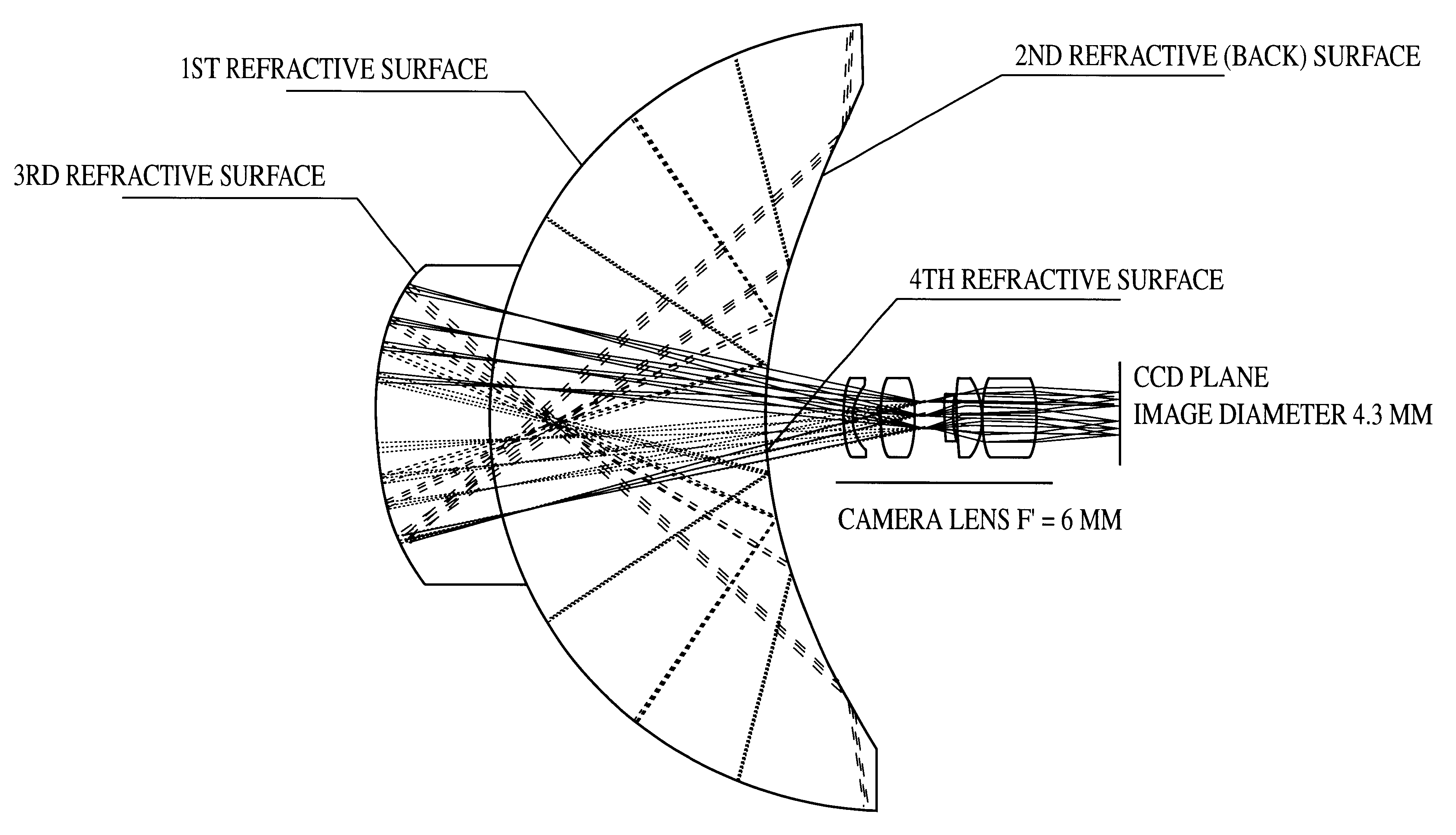Super wide-angle panoramic imaging apparatus
a panoramic imaging and super wide-angle technology, applied in the field of panoramic image sensing, can solve the problems of affecting the image quality of the image, so as to achieve the effect of not losing significant image quality
- Summary
- Abstract
- Description
- Claims
- Application Information
AI Technical Summary
Benefits of technology
Problems solved by technology
Method used
Image
Examples
example three
6.3. Example Three
FIG. 7 illustrates a third exemplary arrangement of the present invention wherein the primary reflector was hyperboloidal in shape and the secondary reflector was spherical, hence ellipsoidal. Field of view of this system was 220 degrees in a vertical plane, the F number was 2.8, the focal length was -0.95 mm, the image diameter was 3.6, which fits to a one third inch (0.85 cm) CCD. The microprojection relay lens had a focal length of 6.25 mm, a back focal length of 8.245 mm, and a distance from the C.sub.1 vertex of 9 mm. Once again, as in the earlier arrangement, the position of the secondary reflector was between the far focus of the primary reflector and the apex of the primary reflector. In such an arrangement, the spherical aberration in pupils was minimal as can be seen from the graphs of saggital and tangential field curvature from FIG. 8(a). The graphs of S and T closely follow each other, indicating a compact caustic of viewpoints. FIG. 8(b) shows a graph...
first embodiment
FIGS. 10, 11(a)(b) and 12 illustrate a fourth exemplary embodiment that was similar to the first embodiment in FIG. 1. The primary and secondary mirrors were once again convex hyperboloidal and concave ellipsoidal, respectively--and had almost equal radii of curvature at the vertexes. Field of view of the system was 260 degrees in a vertical plane, focal length was -0.6 mm, F number was 2.8, and image diameter was 3.6 mm. Relay focal length was 10.25 mm, its back focal length was 13.2 mm. Image quality was comparable (300 lp / mm under 40% of contrast), as for the second and third examples. From FIG. 11(a) can be seen the very high level of the astigmatism and field curvature correction. Image flatness is in the range of from about 4 to about 5 micrometers. This kind of image quality correction was achieved without introduction of higher order aspherical surfaces for the two mirrors. On the other hand, the first hyperbolic mirror diameter was about 135.5 mm, i.e., about three times th...
example five
6.5. Example Five
FIG. 13 shows a fifth exemplary arrangement in which the relay objective was now a Double-Gaussian type of lens, indicated by 5. The rest of the arrangement is similar to that in FIG. 1, in that the primary mirror was hyperboloidal in shape, the secondary reflector was ellipsoidal in shape and the two conics were strictly confocal. Again, in this arrangement, the caustic of viewpoints was substantially a single viewpoint and hence the system had a single viewpoint of reference.
PUM
 Login to View More
Login to View More Abstract
Description
Claims
Application Information
 Login to View More
Login to View More - R&D
- Intellectual Property
- Life Sciences
- Materials
- Tech Scout
- Unparalleled Data Quality
- Higher Quality Content
- 60% Fewer Hallucinations
Browse by: Latest US Patents, China's latest patents, Technical Efficacy Thesaurus, Application Domain, Technology Topic, Popular Technical Reports.
© 2025 PatSnap. All rights reserved.Legal|Privacy policy|Modern Slavery Act Transparency Statement|Sitemap|About US| Contact US: help@patsnap.com



